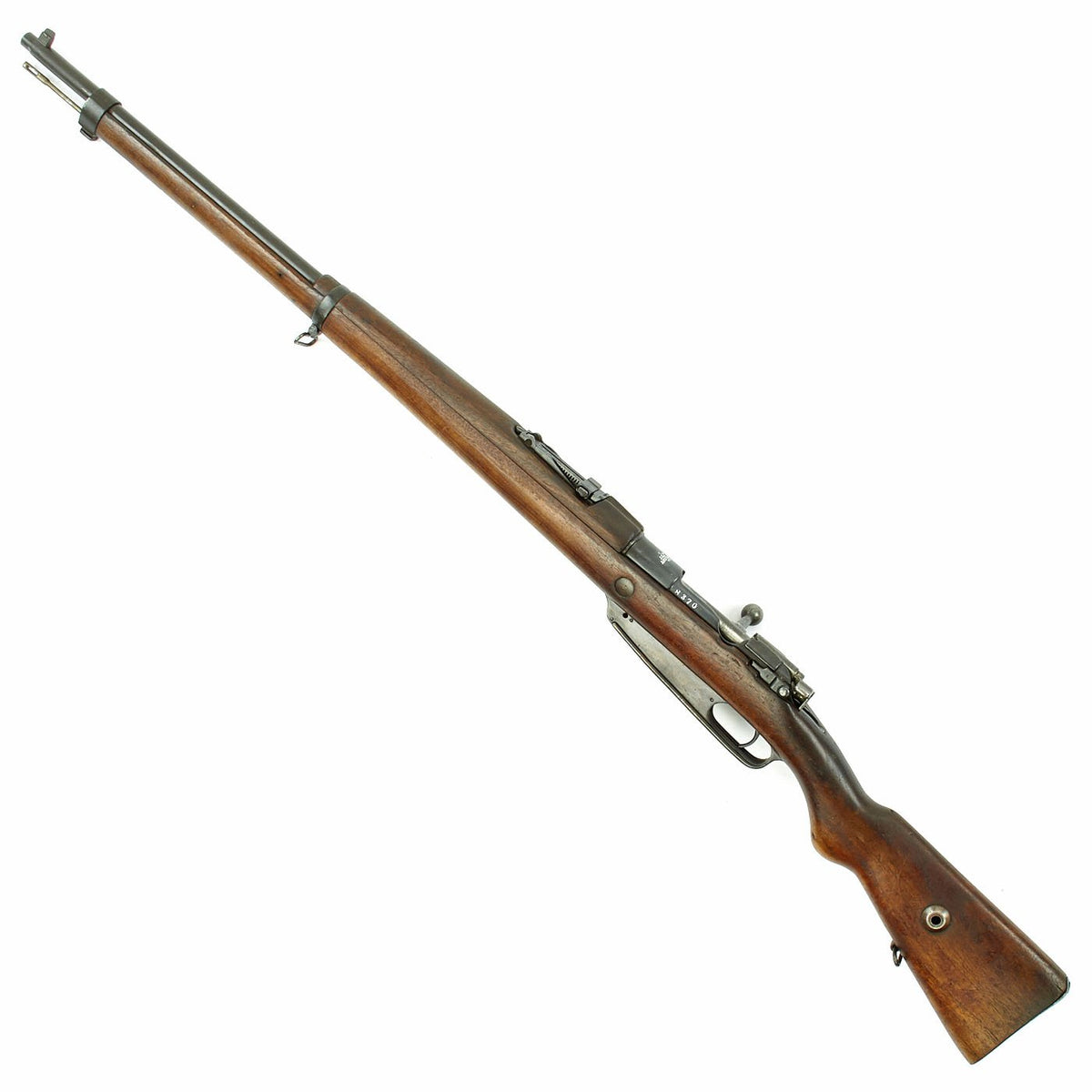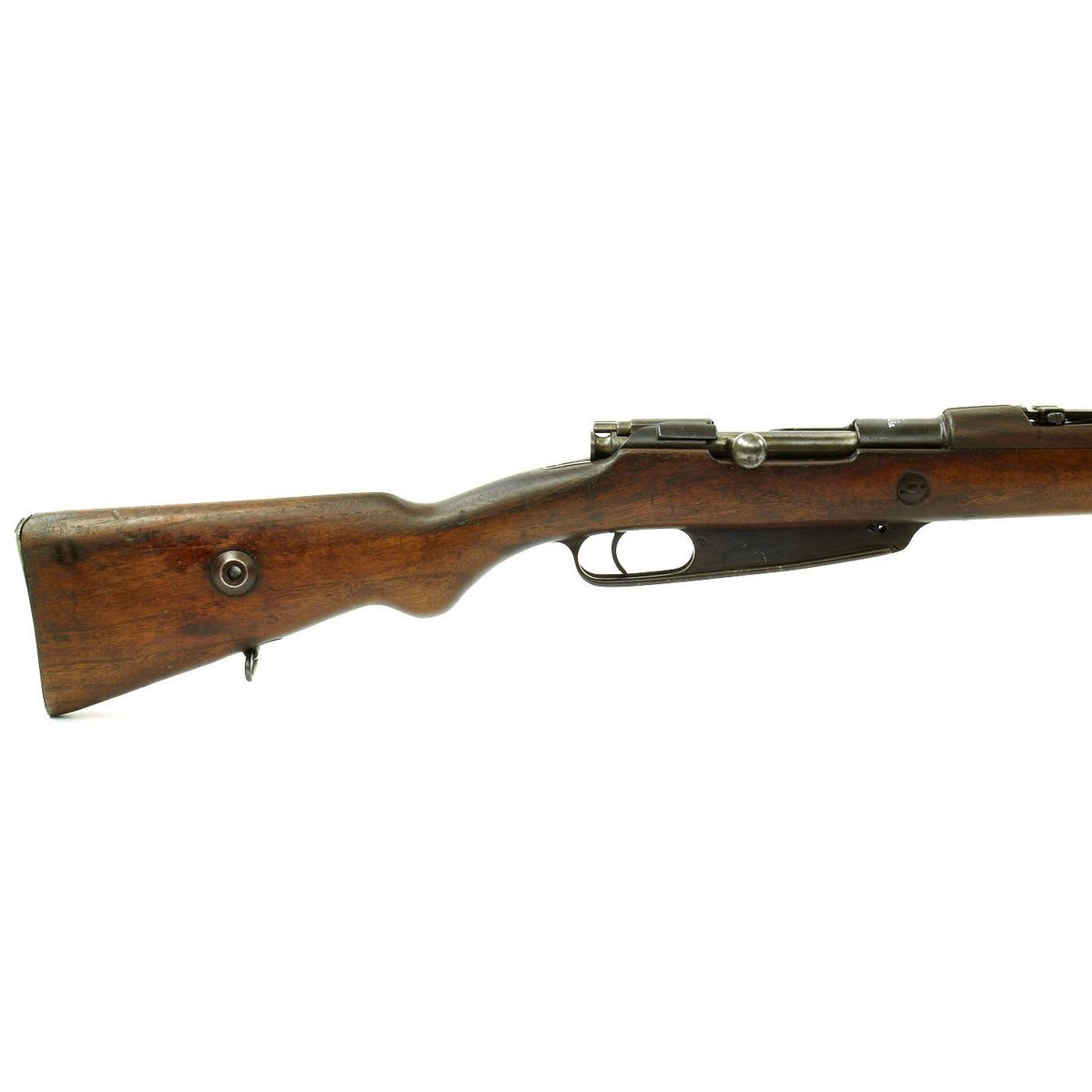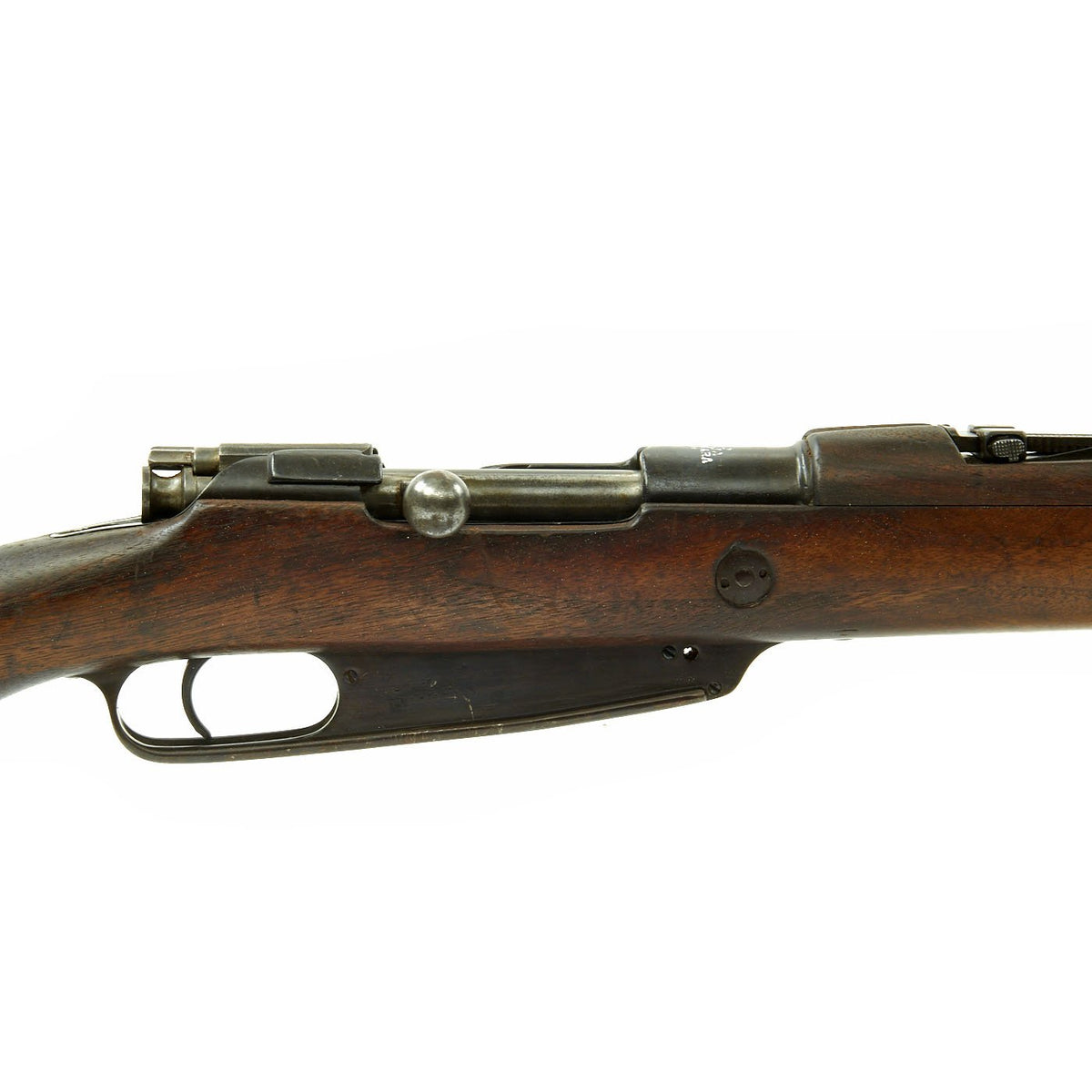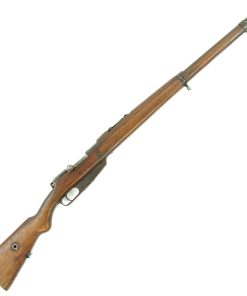Original Antique German Pre-WWI Gewehr 88/05 S Commission Rifle Refitted at Ankara, Turkey in 1938 Original Items
$ 695,00 $ 208,50
Original Item: Only one Available. This is a rare and very interesting example of a German manufactured Gewehr 1888 “Commission Rifle”, also known as the Gewehr 88, or GEW 88. All of these were made in the 1890s, making it an ANTIQUE by Federal Law.
These rifles were originally chambered for 7.92mm Patrone 88 ammunition and had a fixed magazine. As with virtually all Gewehr 88 rifles in service, this example was converted to take the 7.92×57mm Mauser S Patrone. The Spitzer-shaped S Cartridge was ballistically superior to the M/88, however the chamber required modification to accept the thicker walled shell casing. This particular rifle has notched plates welded to the rear of the receiver on either side to accept the 1905 pattern stripper clips, making this a Gewehr 88/05 S. It also has the tell tale “notch” cut into the rear of the receiver, as the loaded clip would run into this area. This example no longer has the magazine floor plate.
This rifle saw long service in the German army for years, and has a faded regimental marking on the lower barrel band. It was then eventually transferred to TURKEY, Germany’s World War One ally, along with many other GEW 88/05S rifles. It remained in Turkey in the 1920s and 1930s. By the late 1930s, with increasing tensions in Europe, Turkey saw a need to modernize its arms, but instead of purchasing new rifles, they elected to work with what they had, which is how they ended up with a GEW 88/05S rifle which looks very much like a more modern Mauser GEW 98 or k98K.
These modifications took place at ANKARA arsenal in turkey, and this rifle was converted in 1938, as indicated by the markings above the chamber. The original receiver actions were used, along with the bolts, which still bear their Crescent Moon markings. The stock is entirely new, and very close to the Mauser 98 design. The barrel inside a barrel jacket used by the GEW88 is gone, and the barrel is fitted with a new front and rear sight. We do not know whether the original barrels were used, or whether new made barrels were installed.
Condition of the rifle is very nice, with a very attractive stock with minimal wear and damage. The bore shows clear lands and grooves, with a mostly bright finish, showing some wear. The action cycles nicely, and the bolt still has the easily lost extractor installed.
An absolutely genuine GERMAN contract M-1888 Service Rifle issued to a German Infantry Regiment, and subsequently shipped as Military Aid to Turkey during or before World War One. This possibly saw service on TWO fronts of the Great War before being kept in storage until 1938, when it was “modernized”.
It was not until well after WWII that Turkey started selling off these antiquated rifles. Fully cleaned and ready to display!
History of the Gewehr 88
In 1886, the French Army unveiled the Modelle 1886 “Lebel” rifle. There was an immediate reaction in German military circles bordering on hysteria. Why? Because the Lebel was the world’s first small bore military rifle using an efficient smokeless powder cartridge. Now, the Lebel, which used a tubular magazine located under the barrel was not a particularly noteworthy design, but the power and flat trajectory of the new French 8mm round far outclassed the 11mm Reichspatrone black powder round used in the contemporary German infantry rifle, the Mauser 71/84.
In this rather charged atmosphere, the German Gewehr Prfungs Kommission (GPK – Rifle Testing Commission) went to work. Initially, the idea was to revise the Mauser Gewehr 71/84 to use a small caliber smokeless powder round based on the old 11mm black powder Reichspatrone. To this extent, production machinery was ordered from the Ludwig Loewe Company of Berlin-Charlottenburg in December, 1887. As things progressed, the GPK became disillusioned with this technical approach, and so a rather strange hybrid of ideas took shape.
The bolt design was highly revised by a Spandau Arsenal technician named Louis Schlegelmilch and features a separate bolt head. The ensuing rifle had a Schlegelmilch/Mauser action, a five shot clip loaded Mannlicher style magazine (note: while the clip falls out as with the Mannlicher clips, this one was markedly improved in that it could be loaded with either end down as opposed to only one end on the true Mannlicher), and a full length barrel jacket designed by Armand Mieg. The pitch and profile of the rifling were copied directly from that of the Lebel. The cartridge chosen was a modified Swiss style rimless design based on the ideas of Eduard Rubin. By March 23, 1888, the Bavarian military observer in Berlin, General von Xylander reported that the development was virtually complete.
Field trials for the new rifle were completed in November, 1888, and the GPK recommended that it be adopted immediately. The adoption orders were signed by Kaiser Wilhelm II on November 12, 1888. Issue of the Gewehr 88 as the new rife was designated, were first made in the spring of 1889 to the XV and XVI Armeekorps stationed in Elsass-Lothringen. Issue to the Bavarian military units began in October 1889, and by August 1890, all Prussian, Saxon, and Wrttemberger line units had been re-equipped.
The Gewehr 88 was made by the three primary Prussian arsenals at Danzig, Erfurt, and Spandau, a smaller Bavarian establishment at Amberg, as well as several private contractors, including the Ludwig Loewe Company, Osterreichische Waffenfabrik Gesellschaft (Steyr), and Haenel. Production figures up to the time production ceased in 1897 are as follows:
Prussian Government Arsenals: 750,000
Amberg: 425,000
Loewe: 425,000
Steyr: 300,000
Haenel: 100,000
Total: 1,675,000
Specifications-
Year of Manufacture: 1890s – Refitted 1938
Caliber: 7.92×57mm Mauser
Cartridge Type: Centerfire Cartridge
Barrel Length: 29 inches
Overall Length: 49 Inches
Action type: Bolt-Action
Feed System: 5 round internal magazine
Fast Shipping with Professional Packaging
Thanks to our longstanding association with UPS FedEx DHL, and other major international carriers, we are able to provide a range of shipping options. Our warehouse staff is expertly trained and will wrap your products according to our exact and precise specifications. Prior to shipping, your goods will be thoroughly examined and securely secured. We ship to thousands clients each day across multiple countries. This shows how we're dedicated to be the largest retailer on the internet. Warehouses and distribution centres can be located throughout Europe as well as the USA.
Note: Orders with more than one item will be assigned a processing date depending on the item.
Before shipping before shipping, we'll conduct a thorough inspection of the items you have ordered. Today, the majority of orders will be delivered within 48 hours. The delivery time will be between 3-7 days.
Returns
The stock is dynamic and we cannot completely manage it because multiple stakeholders are involved, including our factory and warehouse. So the actual stock may alter at any time. It's possible that you may not receive your order once the order has been made.
Our policy is valid for a period of 30 days. If you don't receive the product within 30 days, we are not able to issue a refund or an exchange.
You can only return an item if it is unused and in the same state as the day you received it. You must have the item in its original packaging.
Related products
Uncategorized
Uncategorized
Uncategorized
Uncategorized
Uncategorized
Uncategorized
Uncategorized
Australian WWII Owen MK1 Machine Carbine SMG Custom Fabricated Replica with Sling Original Items
Uncategorized
Uncategorized
Uncategorized
Uncategorized
Uncategorized
Uncategorized
Uncategorized
Angolan Rebel 1970s era 60mm Inert Display Mortar from Angolan Civil War Original Items
Uncategorized
Uncategorized
Armoured Fighting Vehicles of the World: AFVs of World War One (Hardcover Book) New Made Items
Uncategorized
Uncategorized
Uncategorized












































































